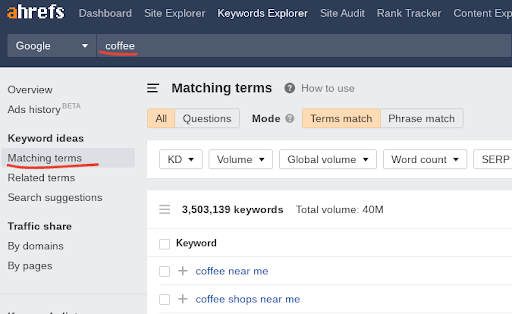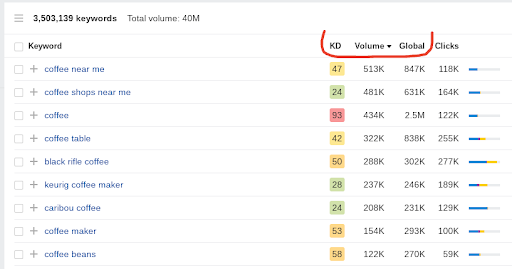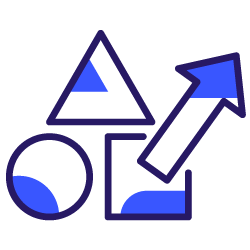If your content is not created with SEO optimization in mind, then it’s like a suitcase without wheels, no one will want to pick it up (especially Google).
Simply put, you can write an excellent piece of content, but if you don’t optimize that content then all of the hard work you put into it is essentially wasted.
The good news is that on-page SEO optimization is not a complicated process, but easily one of the most important parts of content marketing.
In this post, we go through the 5 simple steps to get your content on point, so keep on reading.
Technical SEO vs On-page SEO Optimization, and why it matters
With the recent Google core updates, you need to take every measure possible to ensure that your reader discovers your content.
Why is this important?
Aside from discoverability, ranking a piece of content in the top 10 on the Google SERP (Search Engine Results Page) is equivalent to owning a piece of real estate.
Holding a position like that has tremendous value and leverage, not even mentioning the massive free organic traffic that you get as well.
But before we dive into the five steps, we need to differentiate SEO optimization as it’s divided into two categories: technical SEO and content optimization.
Technical SEO is the process of optimizing the backend of a website, the code, how fast the site loads, sitemaps, indexability, mobile-friendliness, page structure, security, and the list goes on.
Content optimization is the process of optimizing everything on your content page so it has the best chance to rank on Google, with the end goal of getting you traffic and new customers.
And as you can see, technical SEO is an entirely different beast in itself, and using a SEO crawler like Oncrawl is essential to find and rectify potential issues in the backend.
But for this article that you’re reading right now, we’ll dive into the 5 easy steps for easy content optimization so you know exactly what to do.
You might want to bookmark this post for future reference, now let’s start optimizing!
SEO Optimization in 5 Simple Yet Highly Effective Steps
1. Keyword Research
Before you even put a single word down on “paper”, you need to know which is your target keyword, and ranking content on Google is all about relevancy.
Everything else that has to do with on-page SEO optimization builds upon this single thing.
It all comes down to understanding what Google is really trying to achieve, which is this:
Google wants to organize the world’s information and provide a search with the most accurate answer.
Otherwise, if a customer (in this case a visitor searching for something) can’t find what they’re looking for, they might go somewhere else which negatively impacts Google’s ad revenue.

Source: moz.com
This is why targeting one single keyword that is relevant to a search query is the way to go, as it aligns with what Google is trying to achieve and is essential to rankings.
But it does not just end there, you need to also find a keyword that has enough search volume for it to be worthwhile the investment, as well as manageable competition.
The best way I found for keyword research is using a paid tool like Ahrefs, but there are plenty of other SEO and keyword research tools on the market, both paid and free.
Although different tools have different metrics and values for defining search volume and competition, the concept remains the same for any given keyword:
Find a good amount of search volume, with a decent amount of competition
Using Ahrefs for keyword research
Step 1: Enter a seed keyword into the keywords explorer tool inside Ahrefs, sort keyword ideas by “matching terms”. For this example, we’ll use our favorite beverage to be more productive, coffee.

Step 2: Look at the KD (Keyword Difficulty) and Volume to determine what keyword would be suitable to publish a piece of content for.
A good range is for KD < 40 and Volume > 2000

Looking at these metrics can get you started in the right direction, but keyword research is a skill in itself and goes much deeper than this.
You should also consider looking at the SERPs, who is your competition, what is their domain rating, and more.
For example, if the top positions are dominated by sites like NewYorkTimes, TechCrunch, CNN, Forbes, CNET, and other massive domains, you might consider not competing with them.
[Case Study] Driving growth in new markets with on-page SEO
2. Align Content Based on Search Intent
Once you’ve picked a great-looking keyword that has good search volume and decent competition, you’ll now want to take a closer look at the SERP to figure out search intent.
As we described in step 1, Google is after the most relevant content to answer a search query, so we need to align our content based on search intent.
Taking our Coffee example with the keyword “best coffee maker”, the SERP looks like this:

Google is showing articles based on things like 2021, with grinders, best drip, and even best cheap as well. You can do this search as well simply by Googling the keyword and looking at the top 10 results.
By analyzing search intent, we can figure out that people who are searching for the best coffee maker are actually interested in the best drip coffee makers in 2021, preferably cheap.
This will influence what we write about in our content to match search intent.
3. Formatting that Google Will Love
Once we got our keyword and search intent sorted, now it’s important to format the article in a way that makes the life of Google’s web crawlers easy.
Using a free tool like Moz’s meta title tag, make sure to use a compelling title that matches search intent, has the keyword in it, and is within the headline characters limits as to not have it cut off.
This headline will be your H1 in the post (Heading 1).
H2 headings are for questions and the keyword should be in the first H2 as well.
H3 are the answers to the questions in H2.
H4 are steps, actions, or subtopics beneath H3.

This simple hierarchy lets Google know how to read and interpret your article. For reference to the example above, a fully SEO-optimized article like the best podcast hosting looks like this.
4. Use SEO Tools to Outrank Competition
Just by doing the previous three steps, you have now effectively outperformed the majority of the competition, but we can take this a step further.
By using SEO tools, we get an edge in how we write the content. Google’s algorithm is become more intelligent by the day and is not looking just at a single keyword.
It’s also looking for any related keywords to the main topic, called semantic keywords.
Using an SEO keyword tool like SurferSEO we can get a list of semantically related keywords, how many times they should appear inside the content, how long the article should be, and much more.

Bonus: Easily Simplify Technical SEO
In conjunction with the on-page SEO optimization, we can easily improve the technical SEO scores of our entire website using a seo tool like Oncrawl, which lets you:
- Analyze your entire enterprise website in a single click, regardless of size.
- Get an indication of what ranking factors influence the organic traffic, and fix them.
- Monitor and detect any performance issues with technical checkups and site audits.
By covering both the areas of technical SEO and optimizing the content for search intent, you’ve now SEO optimized everything that you need to rank higher, get more traffic, and generate more sales, effectively outperforming millions of websites.
Frequently asked questions
What is optimization in SEO?
Search engine optimization (SEO) is the process of affecting the visibility of a website or a web page in a search engine’s “natural” or un-paid (“organic”) search results.
It is essentially a set of principles that when used improve your site to make it more appealing to search engines, with the end goal being able to rank higher in search results.
This includes on-page and off-page optimization.
On-page optimization means improving your content so that it can rank higher in search engines through adjusting the search intent, including the correct formatting, using semantic keywords, and more to make it as spot-on as possible for the Google algorithm to take notice.
Off-page optimization, or in other words Technical SEO, means both optimizing the website’s architecture, loading speeds, mobile-friendliness, and even things like a better back-link profile through guest posting.
There are many factors that search engines consider for ranking a website high in search results, and these are called ranking signals, but diving deep into these is beyond the scope of this post.
Request your custom demo
How do you optimize for SEO?
On-page SEO optimization can be broken down into 4 simple steps, which are:
- Keyword Research
- Align content based on Search Intent
- Use formatting so Google understands your content
- Use SEO tools to elevate your content
For a detailed walkthrough, please read through this article as we expand on everything that you need to know for on-page SEO optimization.
Wrap up
Now that you have your post all formatted correctly and neatly optimized for SEO, you can focus your attention on simply writing great content!
Use the keyword you found in Step 1, use some of the recommended SEO tools, and make sure to include the semantic keywords that are most relevant to Google and your readers.
We hope you enjoyed this article about on-page SEO optimization, and we know that you’ll now be able to optimize your website to be more search engine friendly.

